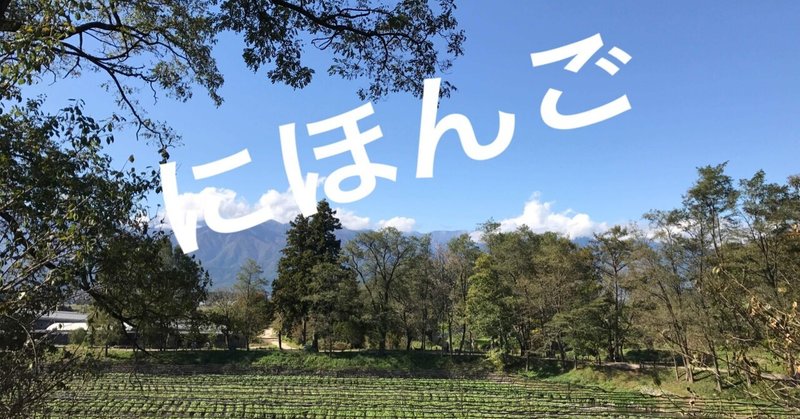
to understand the Japanese values through the Japanese language: #5- Sentence Pattern〜 日本語表現から見える日本人:#5-文型について
Sentence Pattern
The Japanese sentence pattern is the word order of "SOV (subject, object, verb) type, and there are the following three basic sentence patterns:
(Examples)
⚫︎ Pattern 1:
“Chichi ga heya de hon o yonde iru”
= My father is reading a book in the room. (Predicate is a verb)
⚫︎ Pattern 2:
“Fujisan wa utsukushii”
= Mt. Fuji is beautiful. (Predicate is an adjective)
⚫︎ Pattern 3:
“Wakashima ga sekininnsha da”
= I am the person in charge. (Predicate is a noun)
In grammatical terms, these three sentence patterns are called "verb sentence (Pattern 1)", "adjective sentence (Pattern 2)", and "noun sentence (Pattern 3) " respectively. “Verb” and “adjectives (“na-adjectives” and “i-adjectives”) in Japanese grammar will be explained later.
The point of this topic is that:
⚫︎the parts of the words "father(父)", "room(部屋)", "book(本)", and "reading(読んでいる)" are connected by "ga(が)", "de(で)", and "o(を)" to complete the sentence in the sentence Pattern 1.
⚫︎The sentence Pattern 2 is composed of "Mt. Fuji(富士山)", "Beautiful(美しい)", and "wa(は)".
⚫︎The same is true for the Pattern 3.
Let's take a little more detail with the example of Pattern 1.
If there are no "ga", "de", and "o", and only "father, room, book, reading" are lined up, you might be able to just imagine what it means from the words being lined up. Completed text is required to accurately convey the situation/meaning. The element that completes this as a sentence is "ga”, “de” and “o". These are called "particles" in grammatical terms. It has the function of indicating "who", "where", and "what" to complete the meaning of the sentence.
In Japanese, the function of the particles is very important, and it also plays a role in conveying subtle nuances.
Therefore, from the next time, I would like to take a closer look at the particles.
📝 Otte-Gaki (postscript)
The word order in Japanese is based on "SOV", but if you follow the rule "the predicate should be put at the end of the sentence", there are no restrictions on the word order of other part of speech. This is a big difference from English, which strictly follows the word order of "SVO".
It is the "function of particles" that makes it possible to change the word order.
Particles also express subtle differences in nuances. Most native speakers of Japanese can intuitively understand the difference, but cannot explain it grammatically. Neither can I.
(to be continued to #6)
✒︎✒︎✒︎✒︎✒︎✒︎✒︎✒︎✒︎✒︎✒︎✒︎✒︎✒︎✒︎✒︎
文型について
日本語の文型は「S・O・V(主語・目的語・動詞)の語順から成り、次のような基本の3文型があります:
(例文)
⚫︎パターン1:父 が 部屋 で 本 を 読んでいる。(述語が動詞)
⚫︎パターン2:富士山 は 美しい。(述語が形容詞/形容動詞)
⚫︎パターン3:僕 が 責任者 だ。(述語が名詞)
この3文型を文法用語では、「動詞文(パターン1)」、「形容詞文(パターン2)」、「名詞文(パターン3)」と言いますが、「動詞」「形容詞(+形容動詞)」の文法機能については追々説明します。
今回のポイントは、パターン1の例文で、「父」「部屋」「本」「読んでいる」という言葉のパーツを、「が」「で」「を」によってつなげて文章が出来上がっている点です。パターン2の例文では、「富士山」「美しい」「は」の構成です。パターン3も同様です。
一番目の例文で、「父・部屋・本・読んでいる」だけの単語のパーツが羅列しているだけだと、何となく意味は分かりますが、文章としては完全ではありません。これを文章として完成させる要素が、「が・で・を」です。これらは、文法用語で「助詞」と言います。「誰が」、「どこで」、「何を」を示して、文章の意味を完成させる機能を持っているのです。
日本語では、この助詞の働きが非常に重要であり、微妙なニュアンスを伝える役割も果たしています。
次回から、この助詞について、じっくりと見ていきたいと思います。
📝 追而書
日本語の語順は「SOV」を基本としますが、「述語を文末に置く」というルールを守れば、その他の品詞の語順は自由です。ここが、「SVO」の語順を崩さず、文章の意味を構成する英語との大きな違いです。
語順を自由に入れ替えられることを可能としているのが、「助詞の働き」なのです。
また、助詞は微妙なニュアンスの違いも表現します。日本語の母語話者は、感覚的にその違いを理解できますが、文法的には説明ができません。私もそうです。
(#6へ続く)
この記事が気に入ったらサポートをしてみませんか?
